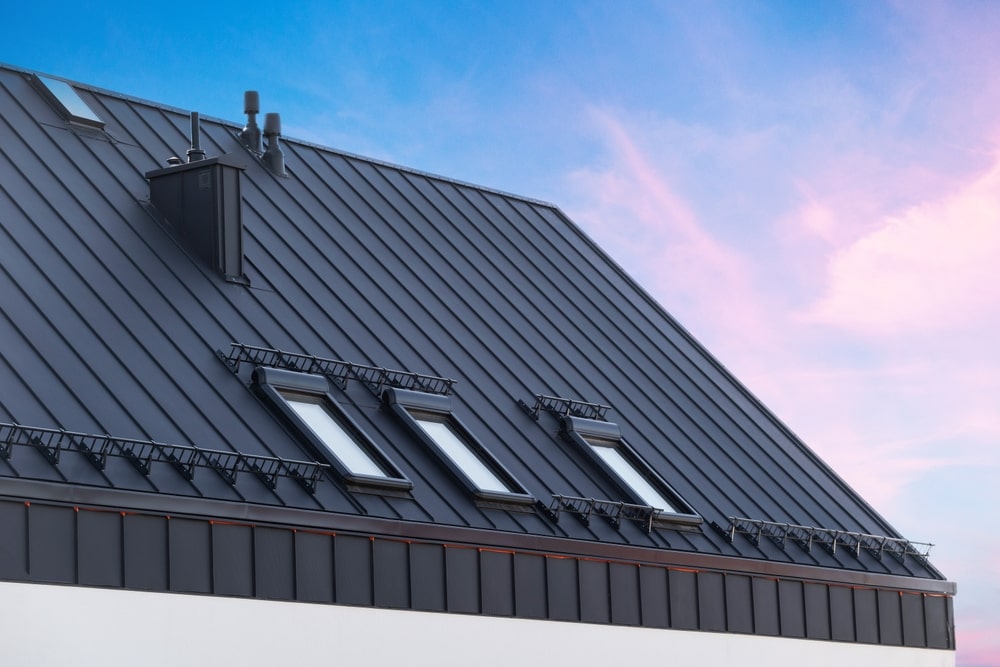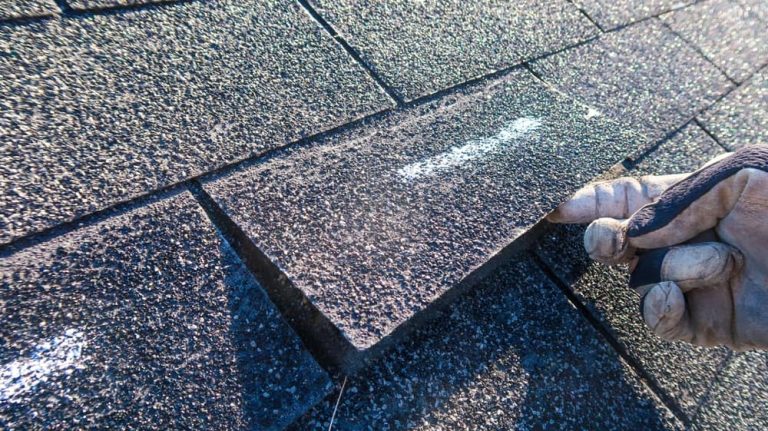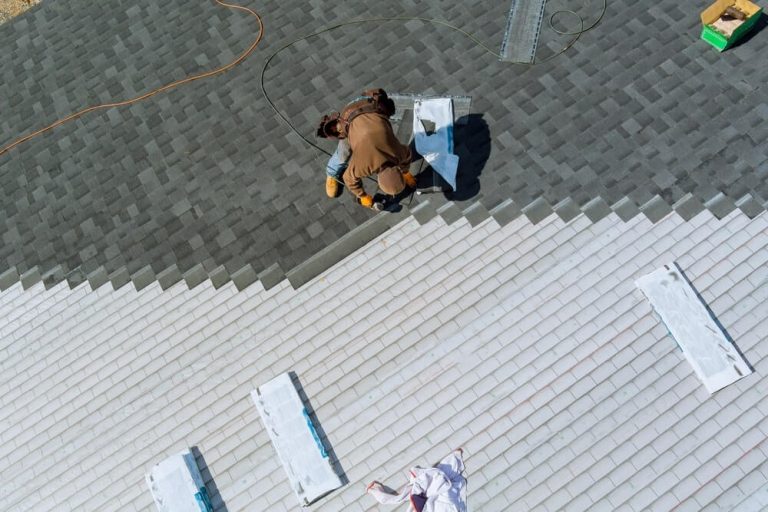While you might not think about your roof or attic often, part of having a well-maintained home involves proper roof insulation and ventilation. The insulation of your home, particularly in the attic, helps regulate the indoor temperature in your home, and it also determines how much energy you conserve or waste.
When you have proper insulation in your home, it increases energy efficiency and comfort. In the winter, your insulation plays a vital role in ensuring that your home retains warmth from your heater. Likewise, it will also help keep the heat out in the summer, allowing your cooling system to ensure your comfort on the hottest days. Essentially, it serves to stabilize your indoor temperatures while reducing the workload on your HVAC system, preventing it from enduring added wear and tear.
Ventilation works in tandem with insulation to help your home, allowing it to be properly aerated. An attic that is ventilated correctly will prevent moisture from building up while also reducing the risk of mold growth. Keeping the structural integrity of your home intact is crucial, and ventilation helps ensure that your roof stays strong and protective while also increasing the longevity of the materials used to insulate this area.
Some homeowners go into their attics while others prefer to stay away. No matter which type of homeowner you are, understanding that the balance between attic insulation and ventilation must be maintained is critical. By knowing what is needed, you will reduce the potential of issues like ice damming in colder locations as well as heat buildup in warmer, more tropical areas. Keeping the balance right also helps you avoid excessive energy costs while protecting your living environment from moisture intrusion and dampness, along with all the problems that can arise from them.
Pinnacle Home Improvements provides services tailored to your home’s structural needs to help increase its vitality as well as its curb appeal. In this comprehensive guide, we explain roof insulation and ventilation to help you make the right choices for protecting your home.
Understanding Attic Insulation and Ventilation
If you want your home to be energy efficient and have good indoor air quality, then you need to look at the insulation in your attic as well as your ventilation. The significance of these components is a crucial aspect that every homeowner must understand. Read on to learn about the various insulation materials as well as the importance of attic insulation and ventilation, and the problems that may arise when there are issues with these parts of your home.
Why Is Attic Insulation and Ventilation a Significant Concern for Homeowners?
Your home needs proper attic insulation and ventilation, and maintaining these aspects is something you need to focus on. Insulation is vital as it helps your home to retain heat in the winter, allowing you and your family to feel cozy and warm. Summers would be far more brutal indoors if your home lacked insulation to keep the heat out and keep the cooled air inside.
The ventilation of your home is just as important, managing the flow of air in and out of the attic. This action prevents moisture buildup as well as reduces the accumulation of heat. Insulation and ventilation work together to help your home remain comfortable, energy-efficient, and prevent moisture-related problems from arising.
In short, insulation provides optimum temperature control through a barrier that prevents heat transfer. Ventilation provides moisture control, reducing the risk of moisture accumulation that can eventually cause mold growth.
Advantages of Investing in Attic Insulation and Ventilation
Perhaps you’ve owned your home for a while and the insulation and ventilation are no longer adequate, or you may have bought a home and inspections revealed that attention needs to be paid to these areas. Whatever the case, investing in quality insulation and ventilation for your attic provides plenty of benefits.
You’ll enjoy lower energy bills since you’ll be putting less demand on your HVAC system. You’ll also be helping your home stay more durable and structurally intact by safeguarding it from moisture damage. Another benefit is that taking care of the attic insulation and ventilation will benefit your health through improved indoor air quality by removing air that may have moisture and pollutants.
Common Problems That Are Caused By Inadequate Insulation and Ventilation
When you have deficiencies with your attic insulation and ventilation, it can cause several major problems that threaten your home’s structural integrity as well as your comfort. Poor insulation in the winter can leave you and your family shivering indoors. You may run the heater longer and more often, trying to get the chill out of the air and causing much higher energy bills, all while you wear multiple layers to try and stay comfortable. However, an even bigger issue is that poor insulation can cause ice dams to form on your roof. In the summer, extra heat buildup in the attic due to lack of proper insulation can make your cooling system work overtime to create the same output. That means you run a greater risk of having your HVAC system break down on the hottest day of the year, causing added woes and expensive repairs.
When ventilation isn’t adequate, it can make the problem of improper insulation even worse. Moisture from poor ventilation will allow mold to thrive, and that can compromise the structural integrity of your home, not to mention lead to costly fixes.
Attic insulation and ventilation work together to optimize temperature control and keep moisture from building up in your home. When you have proper ventilation, it lets the air flow to circulate and prevent damage from occurring, not to mention, assists with giving you a consistently reliable indoor temperature in any season.
Types of Roof Insulation Materials
In addition to insulating the attic, roof insulation also plays a role in helping keep your home energy efficient. Depending on the type of material you choose, it stands to provide better protection and comfort for your home.
Roof insulation materials reduce heat transfer between the interior of your home and the exterior. There are a variety of these materials that may be used in the construction of your roof.
Blanket Insulation
Blanket insulation gets its name from having the appearance of a blanket. It is most commonly made of fiberglass, mineral wool, or rock wool and comes in rolls or batts. This roof insulation is usually added for standard stud and joist spacing that has little to no obstructions.
On the plus side, blanket insulation is widely available and incredibly affordable. However, installation can cause irritation, which is why it requires donning proper protective gear during the process.
Spray Foam Insulation
Spray foam insulation can be sprayed into tight areas as this liquid foam is designed to expand and fill. It often provides higher R-values and makes an effective barrier for air. It’s one of the best at air sealing, though it needs to be done by a professional. It’s also more expensive than other choices for roof insulation, though it can be well-worth the cost for its effectiveness.
Rigid Board Insulation
Made from fiberglass, polystyrene, or polyurethane, rigid board insulation can be cut to specific sizes. It is best for flat roofs or any area that has high load-bearing requirements. This type of roof insulation is a great choice as it provides a high insulating value with little thickness and can be used with existing roofs; however, it can absorb moisture and proper ventilation is needed to prevent that from happening.
Reflective Insulation
Materials for roof insulation that reflect radiant heat, like radiant barrier sheathing, are referred to as reflective insulation. This is a great choice for homes in hot climates as it prevents downward heat flow. It can be combined with other insulation types for maximum efficiency, though it can be impacted by dust accumulation and isn’t as effective for other types of heat transfer.
Loose-Fill Insulation
Loose-fill insulation uses small particles that are blown in or poured, allowing it to fill irregular-shaped spaces or get around obstructions. It is usually made of foam or fiber as well as other materials. It’s an ideal choice to add to existing insulation, though installing it is best left to the professionals who have the right equipment and expertise.
Pros and Cons of Various Insulation Types
Choosing the right roof insulation is an important decision for the energy efficiency and comfort of your home. This comparison of the advantages and drawbacks of the materials can help you as you prepare to enhance your home. At Pinnacle Home Improvements, we are also happy to answer any questions and concerns about these materials and help you determine which option would provide the best protection for your property.
Fiberglass Insulation
Fiberglass insulation is one of the most readily available options, and it’s also budget-friendly. It is non-flammable, which can give you peace of mind in reducing fire risks. On the downside, it can be very irritating for the skin and respiratory system during the installation phase, though if you’re having professionals do this for you, you won’t have to worry.
Even with professional installation of fiberglass insulation, it is important to note that over time, it may settle, which can make it less effective at protecting your home. If you choose fiberglass insulation, make sure you have inspections conducted at proper intervals, allowing you to keep an eye out for that issue and add more insulation if needed.
Cellulose Insulation
Cellulose insulation is made from recycled materials, which makes it an eco-friendly and sustainable option. It also has excellent soundproofing qualities, but it absorbs moisture well, making it prone to possible mold issues. It may also need added treatments to make it fire-resistant.
Spray Foam Insulation
Spray foam provides an airtight seal that will reduce energy leaks. It has a high R-value, which gives it better thermal resistance compared to other materials. However, it is more expensive and requires professional installation.
Mineral Wool Insulation
Mineral wool doesn’t need added chemicals to make it fire-resistant. It has this capability naturally, plus it’s efficient for sound absorption. However, it is heavier than other materials, and consideration will be needed to determine whether it could cause structural complications with the added weight. It’s also more costly than fiberglass.
Rigid Foam Insulation
If you have limited space, rigid foam insulation is an excellent option. It is highly insulative and water-resistant, making it ideal to prevent moisture-related issues. When choosing rigid foam insulation, it is important to know that it will often require covering with drywall or other fire-related materials to comply with building codes. It is also difficult to install when there are obstructions, as it can leave gaps.
Radiant Barrier Insulation
Radiant barrier insulation is ideal if you live in a hotter climate because it reflects heat away from your home. It can also be combined with other types of insulation, allowing it to provide enhanced performance. It’s not the best option for colder climates, and there needs to be a clear space for installation to reflect radiant heat.
Ultimately, each type of insulation has distinct pros and cons, and there is no one clear winner. While budget is surely a consideration, you will also need to think about your local climate and the specific needs of your home.
What Techniques Are Used for Attic Insulation Installation?
In order for attic insulation to be installed correctly, professionals always consider a variety of aspects. One of the most important considerations is sealing all attic air leaks prior to the installation. This prevents warm air from entering the space while keeping the conditioned air from seeping out.
Professionals also install vapor barriers underneath the insulation to keep moisture problems from occurring. Once that is installed, insulation needs to be evenly distributed at the correct depth to achieve the recommended R-value. The balance between the insulation and ventilation allows for the control of moisture and temperature. Baffles are commonly used along with soffit and ridge vents to keep ventilation channels clear.
Ventilation and insulation should be done by a professional to maintain your roof, allowing your home to have the best energy efficiency and comfort for years to come.
Essentials of Ventilation
As mentioned, it is critical to have proper ventilation in the attic to control moisture and keep air circulating. Otherwise, condensation can build up and cause mold to thrive and wood rot to develop.
Effective attic ventilation helps your home:
- Reduce heat buildup in warmer months, preventing overworking your air conditioner
- Prevents the development of ice dams in winter by keeping the roof cool
How to Know If Your Attic Ventilation Needs to Be Addressed
If you’re wondering whether or not your attic is properly ventilated, there are a few clues that can indicate issues. If you see ice dams forming at the edge of your roof during winter, you should be concerned.
Additionally, musty attic odors, hot ceilings in the summer, and spotting wood rot or mold growth are common signs that you’ll want to call a professional to address. This is why having regular home inspections are important, as professionals can catch these issues early on and prevent the need for costly repairs.
Installation and Maintenance for Insulation and Ventilation
Make sure that your insulation is properly installed and that you have regular maintenance to keep it effective. Those who enjoy DIY projects may want to defer to professionals, as any missteps can cause issues for your roof and home. Failing to maintain your insulation over the years is just as problematic since it can cause the insulation’s properties to deteriorate, leaving your home vulnerable.
Best Practices for Installation
While there are many effective types of insulation, it is imperative that you look at what will work best for your climate, the type of roof on your home, and your local building codes. Talking with a professional home contractor can help you determine the best choice.
Prior to installation, make sure that the attic or roof space is cleared, removing debris and old materials. It’s also best to seal air leaks for your home’s best thermal efficiency. Once the material is in place, roof ventilation should be checked to prevent obstructions, allowing it to circulate the air and keep moisture-related problems from arising.
Maintenance Requirements
Timely preventative maintenance is also important for every homeowner. You should schedule a bi-annual inspection, allowing a professional to spot the early signs of pest infestations, mold, or moisture. If you’re not keen on getting into your attic, hire a professional to clean the dust and debris to ensure it stays effective.
Certain types of insulation have specific needs as well. For example, batt and blanket insulation needs to stay completely dry, and it should never sag or look displaced. As for loose-fill or blown-in insulation, you’ll want to make sure it doesn’t settle or thin in areas because it could compromise your home’s R-value. Spray foam requires less maintenance, though it can crack or pull away. Check for these issues and make sure your insulation is in proper condition.
How Pinnacle Home Improvements’ Expertise Can Help with Ventilation Solutions
At Pinnacle Home Improvements, we have a solid reputation for providing high-quality attic insulation and ventilation solutions. We are meticulous on all fronts to ensure that your home is energy-efficient and comfortable year-round.
For the most efficient roofing system, we provide comprehensive strategies that include:
- Customized Ventilation Plans: We look at what your home needs and build ventilation systems to address it.
- Excellence in Installation: Our skilled professionals install high-quality materials and make sure we test for proper air exchange.
- Aftercare and Maintenance: We advise you on how to maintain optimal ventilation.
Tips for Energy Efficiency in Attic Insulation
When insulation is done right for insulation and ventilation, you can enjoy significant energy savings and improved comfort. Attic insulation reduces heat loss in the winter and heat gain during summer weather.
We ensure that your attic insulation meets the R-value for your local area to help you see heating and cooling costs go down. We seal air leaks, ensure proper ventilation, and help your HVAC system operate without being overburdened. All of these key factors come together to make your home more efficient, functional, and structurally sound.
Get Enhanced Home Comfort and Energy Efficiency
Pinnacle Home Improvements tailors solutions to every homeowner’s unique needs. We start with a detailed assessment and consultation to help you identify issues and the best way to resolve them.
Our roofing professionals use their comprehensive knowledge of insulation and application methods, allowing them to make the best recommendations. We provide a thorough evaluation to detect common issues like poor ventilation, thermal bridges, and moisture problems to get to the root of the problem and ensure the best effectiveness.
Our trained technicians understand that getting the installation right is as important as choosing the right materials. We help safeguard your home from heat loss and help you maximize your overall energy efficiency. We also follow all local building codes and make sure that we comply with all regulations. Adhering to safety during this process is something we are deeply committed to, both for your safety and the safety of our employees.
Experts should be involved in this process, allowing you to make the most informed decisions about the roofing insulation you choose and ensuring that proper ventilation techniques are upheld for your roof’s integrity. Make sure that you do the right thing to enhance your home’s comfort and value by letting our roofing professionals handle this task, and you’ll have years of comfort and energy savings ahead.















